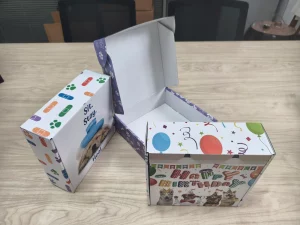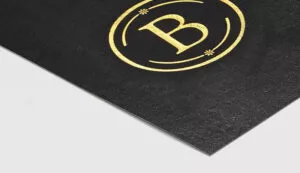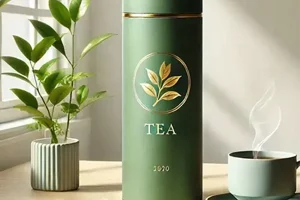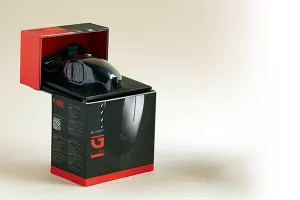I want to ensure my products travel safely and leave a lasting impression on customers. Sometimes I worry if plain boxes are enough to stand out in a crowded market.
Mailing packaging boxes provide a reliable, branded way to ship items. They protect products during transit and create an engaging unboxing moment that customers will remember.

custom boxes
There is more to mailing packaging boxes than meets the eye. Let’s explore what they are, how they’re used, and how they differ from other shipping solutions.
What is a mailer box?
I’ve often searched for a box that is easy to assemble and secure. Mailer boxes fit this description perfectly, with their self-locking design and neat appearance.
A mailer box is a corrugated container with interlocking flaps and tabs, allowing it to close without tape or glue. It’s durable, neat, and visually appealing.

A mailer box stands out because of its structure. It uses a corrugated material that typically includes at least one fluted layer between two flat sheets. This design provides a strong cushion for the contents while remaining relatively lightweight. Unlike a standard shipping box that often requires packing tape for closure, a mailer box uses interlocking flaps. These flaps fold inwards and slot together, forming a secure enclosure.
I find mailer boxes particularly convenient. They require fewer packing materials and can be quickly assembled. Once folded, the box has a clean appearance, which leaves a professional impression. The flaps fit snugly, keeping items in place and protecting them from shifting during transit. This is important if you want to reduce potential damage or breakage.
Many businesses personalize mailer boxes by printing logos, brand colors, or promotional messages on the outside. This branding approach can enhance brand recognition and loyalty. Customers tend to associate the look of the packaging with the overall quality of the product. If they see a well-designed, branded mailer box, they often assume the contents are of high quality.

Mailer boxes work well for a variety of industries: subscription services, specialty goods, or handmade products. The reason is that they combine protection with presentation. By removing the need for excessive tape or filler material, you save money and time. Mailer boxes often allow you to incorporate special unboxing touches, such as tissue paper or a handwritten note inside. This personal detail can help create a memorable experience.
Another advantage is space efficiency. Mailer boxes can be stored flat until needed. This saves storage space in a warehouse or office. When you do need them, they pop into shape quickly. This is especially helpful if you handle many shipments per day or if you have limited storage capacity.
For me, mailer boxes offer the best balance of safety and style. They keep my products intact and let me craft a branded look that resonates with consumers. Their construction also provides a degree of protection from external impacts, though highly fragile items may still need extra padding. Overall, mailer boxes serve as a practical and visually appealing solution for many businesses.
What is the use of mailer box?
I aim to deliver my products in packaging that feels unique and secure. Mailer boxes let me provide a neat, sturdy, and user-friendly solution for shipping.
Mailer boxes protect products in transit and serve as an extension of brand identity. They’re used to deliver goods while offering a memorable unboxing experience.

custom boxes
The primary use of a mailer box is to transport items safely from the point of origin to the customer’s doorstep. However, it does more than just protect goods. It also influences how the customer feels when they open the package. Some e-commerce entrepreneurs see packaging as a powerful way to communicate brand values1. By selecting a specific color palette, adding a logo, or printing a slogan on the inside, I can leverage the mailer box to share my story.
There’s a practical side too. Mailer boxes help reduce shipping costs2 by optimizing space. When a product fits snugly, there’s less need for extra padding or void fill. This lowers the overall weight of the shipment. Less weight means reduced shipping fees, which can add up to big savings if you’re sending out hundreds or thousands of packages per month. For me, this efficiency is helpful in controlling expenses while maintaining a consistent, professional look.

Another reason mailer boxes are popular is their user-friendly nature. The recipient can open and reclose the box without ruining it. This is great if they want to store or return the product. A neat box with a self-locking design also helps ensure the package doesn’t accidentally open mid-transit. I have found that a secure closure reduces complaints related to lost items or damaged goods.
Mailer boxes are versatile across many industries. A subscription-based service can fill them with curated items. A specialty food store can send gourmet treats in temperature-controlled versions. A clothing brand can deliver apparel in neat, foldable mailer boxes that reflect the brand’s style. Because they come in different thicknesses and sizes, it’s easy to find or design a version that meets your needs.
Sustainability is also a factor. Many mailer boxes use recycled content and are themselves recyclable. As consumers become more conscious about waste, eco-friendly packaging decisions can build trust and align with broader social expectations. In my experience, highlighting a mailer box’s green credentials can appeal to customers who value environmental responsibility.
Ultimately, mailer boxes offer a professional, branded way to send items. They serve a functional purpose by protecting products, but they also add a personal touch to the customer’s journey. When I think about the overall customer experience, from the moment someone clicks “buy” to the excitement of opening their purchase, the mailer box is a key piece of that puzzle.
What is the difference between a mailer box and a shipping box?
I used to think all boxes were the same. But then I realized there is a clear distinction between mailer boxes and typical shipping boxes.
Mailer boxes have an interlocking design that requires no tape, while traditional shipping boxes often need tape for sealing. Mailer boxes also focus on presentation and brand appeal.

custom boxes
Mailer boxes and shipping boxes3 might look similar at first glance, but their design and purpose differ. Mailer boxes, sometimes called “folding boxes,” rely on flaps and tabs that neatly tuck into each other to form a secure enclosure. This self-locking feature is handy for e-commerce brands or subscription services that want a polished appearance with minimal extra materials. Shipping boxes, on the other hand, often have flaps that need tape to stay closed.
A shipping box is usually made of corrugated cardboard with different wall thicknesses, depending on how heavy or fragile the contents are. It’s designed primarily for safe delivery, sometimes without emphasis on aesthetics. Businesses might throw a plain label on it and call it a day. Meanwhile, a mailer box is about more than just protection—it’s a branding opportunity. By offering a custom look, mailer boxes4 create an elevated user experience.
Another difference is how they’re used. Shipping boxes, especially big ones, are common for bulk items or larger shipments. If someone is moving houses or shipping heavy furniture, they likely use a large shipping box. Mailer boxes typically handle smaller items like apparel, cosmetics, or curated subscription products. The simpler closure style is perfect for repeated opens and closes. It also adds an element of surprise when customers unbox their products.
In terms of cost, shipping boxes can be cheaper if purchased in generic bulk. Mailer boxes, especially custom-printed ones, may require a higher initial investment. Still, the branding impact can offset the extra cost by boosting brand loyalty and social media shares. For me, the difference lies in whether I am shipping a large, heavy item or a smaller, high-value product that needs a refined presentation.

The assembly process is also distinct. Shipping boxes might require more taping and reinforcement, which takes extra time. Mailer boxes fold up quickly without tape, saving labor and cutting down on supply costs. This efficiency can improve the packing workflow. The finished mailer box tends to look neat, while a shipping box might appear more utilitarian with layers of tape.
Both mailer boxes and shipping boxes protect contents, but mailer boxes emphasize presentation and user experience. If my priority is to elevate brand perception, I prefer mailer boxes. If I’m sending something large or extra heavy, I might use a traditional shipping box. Knowing this difference helps me pick the right option for each product, ensuring a balanced approach to cost, durability, and brand image.
الخاتمة
Mailer boxes are an excellent solution for brands aiming to combine functional packaging with memorable unboxing experiences. They set businesses apart by offering style and security in one package.
 | Contact: +8613396488817 Email: [email protected] |
|---|
Explore innovative ways to use packaging as a tool for brand storytelling and customer connection. ↩
Learn effective strategies to cut shipping costs and boost your business’s bottom line. ↩
Learn about the key differences between shipping boxes and mailer boxes, focusing on design, use, and cost-effectiveness. ↩
Explore the advantages of mailer boxes for e-commerce, including branding and customer experience enhancements. ↩








